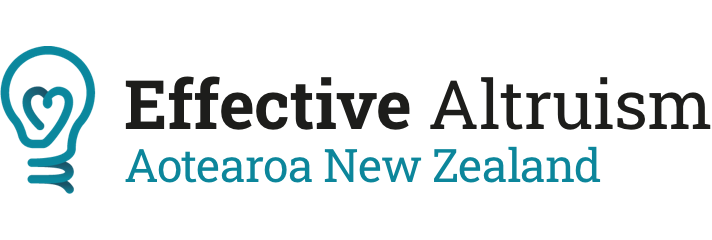Web Developer
Observatorio de Riesgos Catastróficos Globales
📍Remote (Global) 🕔 Full Time
💼 Contractor ⏳20/08/2025
Develop a fully functional website for the AI Risk Explorer (AIRE), which is an online platform designed to monitor large-scale AI risks. The website will include sections for a Risk Monitor, Policy Tracker, blog, newsletter, and informational pages. The goal is to provide users with accessible information on AI risks through an interactive platform.
Deliverables
The final deliverable expected by the end of this contract is the implementation of a fully functional website for the AI Risk Explorer (AIRE), including the elements listed below. The contractor will be required to perform the following tasks:
Implement the frontend of the following website sections:
Risk Explainers (provide an overview of the risk). Sections intersecting text and simple interactive elements such as tables, sliders, and updatable text boxes
Evaluation Hub (assesses risk based on taxonomies, risk chains, and the evolution of benchmark performance, based on a compilation of evaluation reports and benchmarks). Sections consisting of two interactive tables with collapsible entries and a few interactive dashboards representing relevant data (e.g., bar charts, line charts).
Incident Tracker (compiles incidents involving AI). Section consisting of an interactive table with collapsible entries and a dashboard representing relevant data (e.g., charts, maps, etc.).
Policy Tracker (compiles policies addressing different AI risks). Section consisting of an interactive table with collapsible entries and potentially other views (e.g., a network graph for relations between policies, a matrix for gap analysis, etc.).
Blog (includes expert discussion on relevant topics). Text-based section.
Newsletter (includes monthly updates on the risk landscape). Text-based section.
Some artifacts will be embedded from platforms such as Retool, Metabase, and Google Sheets. If an artifact does not conform to the style guide, the contractor will be required to implement it from scratch using HTML and JavaScript (preferably with React.js). The contractor will receive the branding guidelines and a collection of demos and mockups to build upon.
Establish quick feedback loops with the core team, ensuring that analytical needs inform visualization formats and vice versa.
For some artifacts, this might mean implementing mock-ups to iterate upon according to communication objectives and technical feasibility.
Ensure test responsiveness and accessibility across desktop, tablet, and mobile devices.
Gather feedback from users to continuously improve the platform.
Document all code for maintenance purposes (e.g., in a repository, as defined with the project coordinator).
The launch of the platform will likely be split into two phases. The first phase, around September, will consist of the publication of risk explainers, compilation tables pertaining to the Risk Monitor (including evaluation reports, benchmarks, and incidents), and the Policy Tracker. The second phase, around November, will consist of the publication of the dashboards pertaining to the Risk Monitor (including risk assessments and benchmark data), an improved version of the Policy Tracker, the newsletter, and the blog.
Despite the focus on frontend development (80%), given the integration of all project phases, the contractor should be familiar with backend development (~20%), including database management and automated pipelines for information processing. The project currently relies on the following external tools: Supabase (data), n8n (workflows), and Retool (interface). Familiarity with AI risk is desirable but not required.
Production/Delivery Timeline
Start Date: 09/01/2025 Estimated
End Date: 12/31/2025 Estimated
Milestones:
Milestone 1: Project Plan. Get familiar with the tools and inputs received; define the project scope and timeline; design the layout and navigation structure; set up a project repository.
Milestone 2: Structural Build. Iteratively implement Risk Explainers (text + basic interactivity), Evaluation Hub (v1 – tables with collapsible entries), Incident Tracker (interactive table and basic charts), and Policy Tracker (v1 – interactive table only).
Milestone 3: First Launch. Deploy Risk Explainers, Evaluation Hub (v1), Incident Tracker, and Policy Tracker (v1), including debugging, user testing, and refinements based on structured user testing.
Milestone 4: Advanced Visualizations. Iteratively implement Evaluation Hub (v2 – dashboards), Policy Tracker (v2 – advanced views), newsletter, and blog.
Milestone 5: Second Launch. Deploy Evaluation Hub (v2), Policy Tracker (v2), newsletter, and blog, ensuring accessibility and responsiveness.
Milestone 6: Project wrap-up. Deliver a fully documented codebase and propose a roadmap for long-term maintenance.
Review Periods: Weekly meeting with the AI Project Coordinator
Payment Terms
Frequency: 3 - 5 equal installments
Terms: The payments will be made in equal installments, with each payment released upon the successful completion of one-third of the project.
Estimated Budget: Please provide a formal proposal including the total cost for the project.
Evaluation Criteria
The evaluation of the RFQ will be based on:
Price competitiveness
Quality of goods/services
Adherence to timeline
Previous relevant experience
Additional Information or Requirements: Q&A document
Application
To apply, please submit a quote with the total cost for the project or your hourly rate*. Attach your portfolio and CV, and send your submission to Guillem Bas Graells at gbasg@orcg.info and Andrea Castillo Martínez at acastillom@orcg.info**. You should express your interest as soon as possible.
*As the scope of work may still evolve and some questions remain unresolved at this stage, we kindly ask you to confirm both your estimated total project cost and your hourly rate in USD, which will be the currency used for payments.
** For any technical questions or clarifications related to the project scope and deliverables, feel free to reach out to gbasg@orcg.info and acastillom@orcg.info.
Acceptance and Agreement: The vendor agrees to all terms outlined in this RFQ by submitting their quote. All terms are subject to final negotiation and agreement before contracting.
Non-Binding Solicitation: This Request for Quotation (RFQ) is solely a solicitation of pricing and availability and does not constitute a commitment to award a contract or hire the vendor. Submission of a quotation does not imply or guarantee selection for the project or issuance of any further agreements.
Reservation of Rights: We reserve the right to accept or reject any or all quotations, negotiate terms, or cancel this RFQ at any time without any obligation to provide reasons. The final decision will be made based on organizational needs and evaluation criteria.
